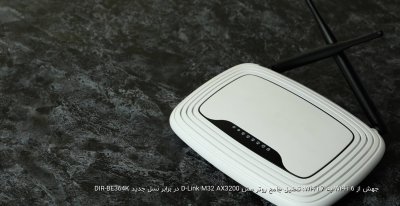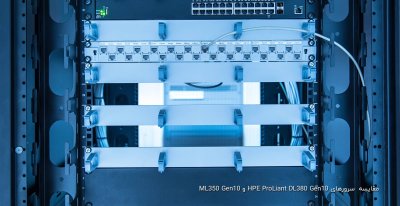#
# Based upon the NCSA server configuration files originally by Rob McCool.
#
# This is the main Apache server configuration file. It contains the
# configuration directives that give the server its instructions.
# See <URL:http://www.apache.org/docs/> for detailed information about
# the directives.
#
# Do NOT simply read the instructions in here without understanding
# what they do. They're here only as hints or reminders. If you are unsure
# consult the online docs. You have been warned.
#
# After this file is processed, the server will look for and process
# srm.conf and then access.conf
# unless you have overridden these with ResourceConfig and/or
# AccessConfig directives here.
#
# The configuration directives are grouped into three basic sections:
# 1. Directives that control the operation of the Apache server process as a
# whole (the 'global environment').
# 2. Directives that define the parameters of the 'main' or 'default' server,
# which responds to requests that aren't handled by a virtual host.
# These directives also provide default values for the settings
# of all virtual hosts.
# 3. Settings for virtual hosts, which allow Web requests to be sent to
# different IP addresses or hostnames and have them handled by the
# same Apache server process.
#
# Configuration and logfile names: If the filenames you specify for many
# of the server's control files begin with "/" (or "drive:/" for Win32), the
# server will use that explicit path. If the filenames do *not* begin
# with "/", the value of ServerRoot is prepended -- so "logs/foo.log"
# with ServerRoot set to "/usr/local/apache" will be interpreted by the
# server as "/usr/local/apache/logs/foo.log".
#
# NOTE: Where filenames are specified, you must use forward slashes
# instead of backslashes (e.g., "c:/apache" instead of "c:\apache").
# If a drive letter is omitted, the drive on which Apache.exe is located
# will be used by default. It is recommended that you always supply
# an explicit drive letter in absolute paths, however, to avoid
# confusion.
#
### Section 1: Global Environment
#
# The directives in this section affect the overall operation of Apache,
# such as the number of concurrent requests it can handle or where it
# can find its configuration files.
#
#
# ServerType is either inetd, or standalone. Inetd mode is only supported on
# Unix platforms.
#
ServerType standalone
#
# ServerRoot: The top of the directory tree under which the server's
# configuration, error, and log files are kept.
#
ServerRoot "C:/Program Files/EasyPHP1-7/apache"
#
# PidFile: The file in which the server should record its process
# identification number when it starts.
#
PidFile logs/httpd.pid
#
# ScoreBoardFile: File used to store internal server process information.
# Not all architectures require this. But if yours does (you'll know because
# this file will be created when you run Apache) then you *must* ensure that
# no two invocations of Apache share the same scoreboard file.
#
ScoreBoardFile logs/apache_runtime_status
#
# In the standard configuration, the server will process httpd.conf (this
# file, specified by the -f command line option), srm.conf, and access.conf
# in that order. The latter two files are now distributed empty, as it is
# recommended that all directives be kept in a single file for simplicity.
# The commented-out values below are the built-in defaults. You can have the
# server ignore these files altogether by using "/dev/null" (for Unix) or
# "nul" (for Win32) for the arguments to the directives.
#
#ResourceConfig conf/srm.conf
#AccessConfig conf/access.conf
#
# Timeout: The number of seconds before receives and sends time out.
#
Timeout 300
#
# KeepAlive: Whether or not to allow persistent connections (more than
# one request per connection). Set to "Off" to deactivate.
#
KeepAlive On
#
# MaxKeepAliveRequests: The maximum number of requests to allow
# during a persistent connection. Set to 0 to allow an unlimited amount.
# We recommend you leave this number high, for maximum performance.
#
MaxKeepAliveRequests 100
#
# KeepAliveTimeout: Number of seconds to wait for the next request from the
# same client on the same connection.
#
KeepAliveTimeout 15
#
# Apache on Win32 always creates one child process to handle requests. If it
# dies, another child process is created automatically. Within the child
# process multiple threads handle incoming requests. The next two
# directives control the behaviour of the threads and processes.
#
#
# MaxRequestsPerChild: the number of requests each child process is
# allowed to process before the child dies. The child will exit so
# as to avoid problems after prolonged use when Apache (and maybe the
# libraries it uses) leak memory or other resources. On most systems, this
# isn't really needed, but a few (such as Solaris) do have notable leaks
# in the libraries. For Win32, set this value to zero (unlimited)
# unless advised otherwise.
#
# NOTE: This value does not include keepalive requests after the initial
# request per connection. For example, if a child process handles
# an initial request and 10 subsequent "keptalive" requests, it
# would only count as 1 request towards this limit.
#
MaxRequestsPerChild 0
#
# Number of concurrent threads (i.e., requests) the server will allow.
# Set this value according to the responsiveness of the server (more
# requests active at once means they're all handled more slowly) and
# the amount of system resources you'll allow the server to consume.
#
ThreadsPerChild 50
#
# Listen: Allows you to bind Apache to specific IP addresses and/or
# ports, in addition to the default. See also the <VirtualHost>
# directive.
#
#Listen 3000
#Listen 12.34.56.78:80
#
# BindAddress: You can support virtual hosts with this option. This directive
# is used to tell the server which IP address to listen to. It can either
# contain "*", an IP address, or a fully qualified Internet domain name.
# See also the <VirtualHost> and Listen directives.
#
#BindAddress *
#
# Dynamic Shared Object (DSO) Support
#
# To be able to use the functionality of a module which was built as a DSO you
# have to place corresponding `LoadModule' lines at this location so the
# directives contained in it are actually available _before_ they are used.
# Please read the file README.DSO in the Apache 1.3 distribution for more
# details about the DSO mechanism and run `apache -l' for the list of already
# built-in (statically linked and thus always available) modules in your Apache
# binary.
#
# Note: The order in which modules are loaded is important. Don't change
# the order below without expert advice.
#
# Example:
# LoadModule foo_module modules/mod_foo.so
#
#LoadModule vhost_alias_module modules/mod_vhost_alias.so
#LoadModule mime_magic_module modules/mod_mime_magic.so
#LoadModule status_module modules/mod_status.so
#LoadModule info_module modules/mod_info.so
#LoadModule speling_module modules/mod_speling.so
LoadModule rewrite_module modules/mod_rewrite.so
LoadModule anon_auth_module modules/mod_auth_anon.so
#LoadModule dbm_auth_module modules/mod_auth_dbm.so
#LoadModule digest_auth_module modules/mod_auth_digest.so
#LoadModule digest_module modules/mod_digest.so
#LoadModule proxy_module modules/mod_proxy.so
#LoadModule cern_meta_module modules/mod_cern_meta.so
#LoadModule expires_module modules/mod_expires.so
#LoadModule headers_module modules/mod_headers.so
#LoadModule usertrack_module modules/mod_usertrack.so
#LoadModule unique_id_module modules/mod_unique_id.so
LoadModule php4_module "C:/Program Files/EasyPHP1-7/php/php4apache.dll"
#
# Reconstruction of the complete module list from all available modules
# (static and shared ones) to achieve correct module execution order.
#
# The modules listed below, without a corresponding LoadModule directive,
# are static bound into the standard Apache binary distribution for Windows.
#
# Note: The order in which modules are loaded is important. Don't change
# the order below without expert advice.
#
# [WHENEVER YOU CHANGE THE LOADMODULE SECTION ABOVE, UPDATE THIS TOO!]
ClearModuleList
#AddModule mod_vhost_alias.c
AddModule mod_env.c
AddModule mod_log_config.c
#AddModule mod_mime_magic.c
AddModule mod_mime.c
AddModule mod_negotiation.c
#AddModule mod_status.c
#AddModule mod_info.c
AddModule mod_include.c
AddModule mod_autoindex.c
AddModule mod_dir.c
AddModule mod_isapi.c
AddModule mod_cgi.c
AddModule mod_asis.c
AddModule mod_imap.c
AddModule mod_actions.c
#AddModule mod_speling.c
AddModule mod_userdir.c
AddModule mod_alias.c
AddModule mod_rewrite.c
AddModule mod_access.c
AddModule mod_auth.c
AddModule mod_auth_anon.c
#AddModule mod_auth_dbm.c
#AddModule mod_auth_digest.c
#AddModule mod_digest.c
#AddModule mod_proxy.c
#AddModule mod_cern_meta.c
#AddModule mod_expires.c
#AddModule mod_headers.c
#AddModule mod_usertrack.c
#AddModule mod_unique_id.c
AddModule mod_so.c
AddModule mod_setenvif.c
AddModule mod_php4.c
#
# ExtendedStatus controls whether Apache will generate "full" status
# information (ExtendedStatus On) or just basic information (ExtendedStatus
# Off) when the "server-status" handler is called. The default is Off.
#
#ExtendedStatus On
### Section 2: 'Main' server configuration
#
# The directives in this section set up the values used by the 'main'
# server, which responds to any requests that aren't handled by a
# <VirtualHost> definition. These values also provide defaults for
# any <VirtualHost> containers you may define later in the file.
#
# All of these directives may appear inside <VirtualHost> containers,
# in which case these default settings will be overridden for the
# virtual host being defined.
#
#
# Port: The port to which the standalone server listens. Certain firewall
# products must be configured before Apache can listen to a specific port.
# Other running httpd servers will also interfere with this port. Disable
# all firewall, security, and other services if you encounter problems.
# To help diagnose problems use the Windows NT command NETSTAT -a
#
Port 80
#
# ServerAdmin: Your address, where problems with the server should be
# e-mailed. This address appears on some server-generated pages, such
# as error documents.
#
ServerAdmin admin@localhost
#
# ServerName allows you to set a host name which is sent back to clients for
# your server if it's different than the one the program would get (i.e., use
# "www" instead of the host's real name).
#
# Note: You cannot just invent host names and hope they work. The name you
# define here must be a valid DNS name for your host. If you don't understand
# this, ask your network administrator.
# If your host doesn't have a registered DNS name, enter its IP address here.
# You will have to access it by its address (e.g., http://123.45.67.89/)
# anyway, and this will make redirections work in a sensible way.
#
# 127.0.0.1 is the TCP/IP local loop-back address, often named localhost. Your
# machine always knows itself by this address. If you use Apache strictly for
# local testing and development, you may use 127.0.0.1 as the server name.
#
ServerName localhost
#
# DocumentRoot: The directory out of which you will serve your
# documents. By default, all requests are taken from this directory, but
# symbolic links and aliases may be used to point to other locations.
#
DocumentRoot "C:/Program Files/EasyPHP1-7/www"
#
# Each directory to which Apache has access, can be configured with respect
# to which services and features are allowed and/or disabled in that
# directory (and its subdirectories).
#
# First, we configure the "default" to be a very restrictive set of
# permissions.
#
<Directory />
Options FollowSymLinks Indexes
AllowOverride All
</Directory>
#
# Note that from this point forward you must specifically allow
# particular features to be enabled - so if something's not working as
# you might expect, make sure that you have specifically enabled it
# below.
#
#
# This should be changed to whatever you set DocumentRoot to.
#
<Directory "C:/Program Files/EasyPHP1-7/www">
#
# This may also be "None", "All", or any combination of "Indexes",
# "Includes", "FollowSymLinks", "ExecCGI", or "MultiViews".
#
# Note that "MultiViews" must be named *explicitly* --- "Options All"
# doesn't give it to you.
#
Options Indexes FollowSymLinks ExecCGI Includes
#
# This controls which options the .htaccess files in directories can
# override. Can also be "All", or any combination of "Options", "FileInfo",
# "AuthConfig", and "Limit"
#
AllowOverride All
#
# Controls who can get stuff from this server.
#
Order allow,deny
Allow from all
</Directory>
#
# UserDir: The name of the directory which is appended onto a user's home
# directory if a ~user request is received.
#
# Under Win32, we do not currently try to determine the home directory of
# a Windows login, so a format such as that below needs to be used. See
# the UserDir documentation for details.
#
<IfModule mod_userdir.c>
UserDir "C:/Program Files/EasyPHP1-7/apache/users/"
</IfModule>
#
# Control access to UserDir directories. The following is an example
# for a site where these directories are restricted to read-only.
#
#<Directory "C:/Program Files/EasyPHP1-7/apache/users">
# AllowOverride FileInfo AuthConfig Limit
# Options MultiViews Indexes SymLinksIfOwnerMatch IncludesNoExec
# <Limit GET POST OPTIONS PROPFIND>
# Order allow,deny
# Allow from all
# </Limit>
# <LimitExcept GET POST OPTIONS PROPFIND>
# Order deny,allow
# Deny from all
# </LimitExcept>
#</Directory>
#
# DirectoryIndex: Name of the file or files to use as a pre-written HTML
# directory index. Separate multiple entries with spaces.
#
<IfModule mod_dir.c>
DirectoryIndex index.html index.shtml index.wml index.pwml index.php index.php3 index.php4 index.dll
</IfModule>
#
# AccessFileName: The name of the file to look for in each directory
# for access control information.
#
AccessFileName .htaccess
#
# The following lines prevent .htaccess files from being viewed by
# Web clients. Since .htaccess files often contain authorization
# information, access is disallowed for security reasons. Comment
# these lines out if you want Web visitors to see the contents of
# .htaccess files. If you change the AccessFileName directive above,
# be sure to make the corresponding changes here.
#
# Also, folks tend to use names such as .htpasswd for password
# files, so this will protect those as well.
#
<Files ~ "^\.ht">
Order allow,deny
Deny from all
Satisfy All
</Files>
#
# CacheNegotiatedDocs: By default, Apache sends "Pragma: no-cache" with each
# document that was negotiated on the basis of content. This asks proxy
# servers not to cache the document. Uncommenting the following line disables
# this behavior, and proxies will be allowed to cache the documents.
#
#CacheNegotiatedDocs
#
# UseCanonicalName: (new for 1.3) With this setting turned on, whenever
# Apache needs to construct a self-referencing URL (a URL that refers back
# to the server the response is coming from) it will use ServerName and
# Port to form a "canonical" name. With this setting off, Apache will
# use the hostname:port that the client supplied, when possible. This
# also affects SERVER_NAME and SERVER_PORT in CGI scripts.
#
UseCanonicalName Off
#
# TypesConfig describes where the mime.types file (or equivalent) is
# to be found.
#
<IfModule mod_mime.c>
TypesConfig conf/mime.types
</IfModule>
#
# DefaultType is the default MIME type the server will use for a document
# if it cannot otherwise determine one, such as from filename extensions.
# If your server contains mostly text or HTML documents, "text/plain" is
# a good value. If most of your content is binary, such as applications
# or images, you may want to use "application/octet-stream" instead to
# keep browsers from trying to display binary files as though they are
# text.
#
DefaultType text/plain
#
# The mod_mime_magic module allows the server to use various hints from the
# contents of the file itself to determine its type. The MIMEMagicFile
# directive tells the module where the hint definitions are located.
# mod_mime_magic is not part of the default server (you have to add
# it yourself with a LoadModule [see the DSO paragraph in the 'Global
# Environment' section], or recompile the server and include mod_mime_magic
# as part of the configuration), so it's enclosed in an <IfModule> container.
# This means that the MIMEMagicFile directive will only be processed if the
# module is part of the server.
#
<IfModule mod_mime_magic.c>
MIMEMagicFile conf/magic
</IfModule>
#
# HostnameLookups: Log the names of clients or just their IP addresses
# e.g., [url]www.apache.org[/url] (on) or 204.62.129.132 (off).
# The default is off because it'd be overall better for the net if people
# had to knowingly turn this feature on, since enabling it means that
# each client request will result in AT LEAST one lookup request to the
# nameserver.
#
HostnameLookups Off
#
# ErrorLog: The location of the error log file.
# If you do not specify an ErrorLog directive within a <VirtualHost>
# container, error messages relating to that virtual host will be
# logged here. If you *do* define an error logfile for a <VirtualHost>
# container, that host's errors will be logged there and not here.
#
ErrorLog logs/error.log
#
# LogLevel: Control the number of messages logged to the error.log.
# Possible values include: debug, info, notice, warn, error, crit,
# alert, emerg.
#
LogLevel warn
#
# The following directives define some format nicknames for use with
# a CustomLog directive (see below).
#
LogFormat "%h %l %u %t \"%r\" %>s %b \"%{Referer}i\" \"%{User-Agent}i\"" combined
LogFormat "%h %l %u %t \"%r\" %>s %b" common
LogFormat "%{Referer}i -> %U" referer
LogFormat "%{User-agent}i" agent
#
# The location and format of the access logfile (Common Logfile Format).
# If you do not define any access logfiles within a <VirtualHost>
# container, they will be logged here. Contrariwise, if you *do*
# define per-<VirtualHost> access logfiles, transactions will be
# logged therein and *not* in this file.
#
CustomLog logs/access.log common
#
# If you would like to have agent and referer logfiles, uncomment the
# following directives.
#
#CustomLog logs/referer.log referer
#CustomLog logs/agent.log agent
#
# If you prefer a single logfile with access, agent, and referer information
# (Combined Logfile Format) you can use the following directive.
#
#CustomLog logs/access.log combined
#
# Optionally add a line containing the server version and virtual host
# name to server-generated pages (error documents, FTP directory listings,
# mod_status and mod_info output etc., but not CGI generated documents).
# Set to "EMail" to also include a mailto: link to the ServerAdmin.
# Set to one of: On | Off | EMail
#
ServerSignature Email
#
# Apache parses all CGI scripts for the shebang line by default.
# This comment line, the first line of the script, consists of the symbols
# pound (#) and exclamation (!) followed by the path of the program that
# can execute this specific script. For a perl script, with perl.exe in
# the C:\Program Files\Perl directory, the shebang line should be:
#!c:/program files/perl/perl
# Note you _must_not_ indent the actual shebang line, and it must be the
# first line of the file. Of course, CGI processing must be enabled by
# the appropriate ScriptAlias or Options ExecCGI directives for the files
# or directory in question.
#
# However, Apache on Windows allows either the Unix behavior above, or can
# use the Registry to match files by extention. The command to execute
# a file of this type is retrieved from the registry by the same method as
# the Windows Explorer would use to handle double-clicking on a file.
# These script actions can be configured from the Windows Explorer View menu,
# 'Folder Options', and reviewing the 'File Types' tab. Clicking the Edit
# button allows you to modify the Actions, of which Apache 1.3 attempts to
# perform the 'Open' Action, and failing that it will try the shebang line.
# This behavior is subject to change in Apache release 2.0.
#
# Each mechanism has it's own specific security weaknesses, from the means
# to run a program you didn't intend the website owner to invoke, and the
# best method is a matter of great debate.
#
# To enable the this Windows specific behavior (and therefore -disable- the
# equivilant Unix behavior), uncomment the following directive:
#
#ScriptInterpreterSource registry
#
# The directive above can be placed in individual <Directory> blocks or the
# .htaccess file, with either the 'registry' (Windows behavior) or 'script'
# (Unix behavior) option, and will override this server default option.
#
#
# Aliases: Add here as many aliases as you need (with no limit). The format is
# Alias fakename realname
#
<IfModule mod_alias.c>
#
# Note that if you include a trailing / on fakename then the server will
# require it to be present in the URL. So "/icons" isn't aliased in this
# example, only "/icons/". If the fakename is slash-terminated, then the
# realname must also be slash terminated, and if the fakename omits the
# trailing slash, the realname must also omit it.
#
Alias /icons/ "C:/Program Files/EasyPHP1-7/apache/icons/"
<Directory "C:/Program Files/EasyPHP1-7/apache/icons">
Options Indexes MultiViews
AllowOverride None
Order allow,deny
Allow from all
</Directory>
Alias /images_easyphp/ "C:/Program Files/EasyPHP1-7/home/images_easyphp/"
<Directory "C:/Program Files/EasyPHP1-7/home/images_easyphp">
Options Indexes MultiViews
AllowOverride None
Order allow,deny
Allow from all
</Directory>
Alias /mysql/ "C:/Program Files/EasyPHP1-7/phpmyadmin/"
<Directory "C:/Program Files/EasyPHP1-7/phpmyadmin">
Options FollowSymLinks Indexes
AllowOverride None
Order deny,allow
allow from 127.0.0.1
deny from all
</Directory>
Alias /home/ "C:/Program Files/EasyPHP1-7/home/"
<Directory "C:/Program Files/EasyPHP1-7/home">
Options FollowSymLinks Indexes
AllowOverride None
Order deny,allow
allow from 127.0.0.1
deny from all
</Directory>
# This Alias will project the on-line documentation tree under /manual/
# even if you change the DocumentRoot. Comment it if you don't want to
# provide access to the on-line documentation.
#
#Alias /manual/ "C:/Program Files/EasyPHP1-7/apache/htdocs/manual/"
#<Directory "C:/Program Files/EasyPHP1-7/apache/htdocs/manual">
# Options Indexes FollowSymlinks MultiViews
# AllowOverride None
# Order allow,deny
# Allow from all
#</Directory>
#
# ScriptAlias: This controls which directories contain server scripts.
# ScriptAliases are essentially the same as Aliases, except that
# documents in the realname directory are treated as applications and
# run by the server when requested rather than as documents sent to the client.
# The same rules about trailing "/" apply to ScriptAlias directives as to
# Alias.
#
# ScriptAlias /cgi-bin/ "C:/Program Files/EasyPHP1-7/cgi-bin/"
#
# "C:/Program Files/EasyPHP1-7/apache/cgi-bin" should be changed to whatever your ScriptAliased
# CGI directory exists, if you have that configured.
#
<Directory "C:/Program Files/EasyPHP1-7/cgi-bin">
AllowOverride None
Options None
Order allow,deny
Allow from all
</Directory>
</IfModule>
# End of aliases.
#
# Redirect allows you to tell clients about documents which used to exist in
# your server's namespace, but do not anymore. This allows you to tell the
# clients where to look for the relocated document.
# Format: Redirect old-URI new-URL
#
#
# Directives controlling the display of server-generated directory listings.
#
<IfModule mod_autoindex.c>
#
# FancyIndexing is whether you want fancy directory indexing or standard
#
# Note, add the option TrackModified to the IndexOptions default list only
# if all indexed directories reside on NTFS volumes. The TrackModified flag
# will report the Last-Modified date to assist caches and proxies to properly
# track directory changes, but it does _not_ work on FAT volumes.
#
IndexOptions FancyIndexing
#
# AddIcon* directives tell the server which icon to show for different
# files or filename extensions. These are only displayed for
# FancyIndexed directories.
#
AddIconByEncoding (CMP,/icons/compressed.gif) x-compress x-gzip
AddIconByType (TXT,/icons/text.gif) text/*
AddIconByType (IMG,/icons/image2.gif) image/*
AddIconByType (SND,/icons/sound2.gif) audio/*
AddIconByType (VID,/icons/movie.gif) video/*
AddIcon /icons/binary.gif .bin .exe
AddIcon /icons/binhex.gif .hqx
AddIcon /icons/tar.gif .tar
AddIcon /icons/world2.gif .wrl .wrl.gz .vrml .vrm .iv
AddIcon /icons/compressed.gif .Z .z .tgz .gz .zip
AddIcon /icons/a.gif .ps .ai .eps
AddIcon /icons/layout.gif .html .shtml .htm .pdf
AddIcon /icons/text.gif .txt
AddIcon /icons/c.gif .c
AddIcon /icons/p.gif .pl .py
AddIcon /icons/f.gif .for
AddIcon /icons/dvi.gif .dvi
AddIcon /icons/uuencoded.gif .uu
AddIcon /icons/script.gif .conf .sh .shar .csh .ksh .tcl
AddIcon /icons/tex.gif .tex
AddIcon /icons/bomb.gif core
AddIcon /icons/back.gif ..
AddIcon /icons/hand.right.gif README
AddIcon /icons/folder.gif ^^DIRECTORY^^
AddIcon /icons/blank.gif ^^BLANKICON^^
#
# DefaultIcon is which icon to show for files which do not have an icon
# explicitly set.
#
DefaultIcon /icons/unknown.gif
#
# AddDescription allows you to place a short description after a file in
# server-generated indexes. These are only displayed for FancyIndexed
# directories.
# Format: AddDescription "description" filename
#
AddDescription "GZIP compressed document" .gz
AddDescription "tar archive" .tar
AddDescription "GZIP compressed tar archive" .tgz
AddDescription "ZIP archive" .zip
AddDescription "CAB archive" .cab
AddDescription "Win32 Executable" .exe
#
# ReadmeName is the name of the README file the server will look for by
# default, and append to directory listings.
#
# HeaderName is the name of a file which should be prepended to
# directory indexes.
#
# If MultiViews are amongst the Options in effect, the server will
# first look for name.html and include it if found. If name.html
# doesn't exist, the server will then look for name.txt and include
# it as plaintext if found.
#
ReadmeName README
HeaderName HEADER
#
# IndexIgnore is a set of filenames which directory indexing should ignore
# and not include in the listing. Shell-style wildcarding is permitted.
#
IndexIgnore .??* *~ *# HEADER* README* RCS CVS *,v *,t
</IfModule>
# End of indexing directives.
#
# Document types.
#
<IfModule mod_mime.c>
#
# AddEncoding allows you to have certain browsers (Mosaic/X 2.1+) uncompress
# information on the fly. Note: Not all browsers support this.
# Despite the name similarity, the following Add* directives have nothing
# to do with the FancyIndexing customization directives above.
#
AddEncoding x-compress Z
AddEncoding x-gzip gz tgz
#
# AddLanguage allows you to specify the language of a document. You can
# then use content negotiation to give a browser a file in a language
# it can understand.
#
# Note 1: The suffix does not have to be the same as the language
# keyword --- those with documents in Polish (whose net-standard
# language code is pl) may wish to use "AddLanguage pl .po" to
# avoid the ambiguity with the common suffix for perl scripts.
#
# Note 2: The example entries below illustrate that in quite
# some cases the two character 'Language' abbreviation is not
# identical to the two character 'Country' code for its country,
# E.g. 'Danmark/dk' versus 'Danish/da'.
#
# Note 3: In the case of 'ltz' we violate the RFC by using a three char
# specifier. But there is 'work in progress' to fix this and get
# the reference data for rfc1766 cleaned up.
#
# Danish (da) - Dutch (nl) - English (en) - Estonian (ee)
# French (fr) - German (de) - Greek-Modern (el)
# Italian (it) - Korean (kr) - Norwegian (no) - Norwegian Nynorsk (nn)
# Portugese (pt) - Luxembourgeois* (ltz)
# Spanish (es) - Swedish (sv) - Catalan (ca) - Czech(cz)
# Polish (pl) - Brazilian Portuguese (pt-br) - Japanese (ja)
# Russian (ru)
#
AddLanguage da .dk
AddLanguage nl .nl
AddLanguage en .en
AddLanguage et .ee
AddLanguage fr .fr
AddLanguage de .de
AddLanguage el .el
AddLanguage he .he
AddCharset ISO-8859-8 .iso8859-8
AddLanguage it .it
AddLanguage ja .ja
AddCharset ISO-2022-JP .jis
AddLanguage kr .kr
AddCharset ISO-2022-KR .iso-kr
AddLanguage nn .nn
AddLanguage no .no
AddLanguage pl .po
AddCharset ISO-8859-2 .iso-pl
AddLanguage pt .pt
AddLanguage pt-br .pt-br
AddLanguage ltz .lu
AddLanguage ca .ca
AddLanguage es .es
AddLanguage sv .sv
AddLanguage cz .cz
AddLanguage ru .ru
AddLanguage tw .tw
AddLanguage zh-tw .tw
AddCharset Big5 .Big5 .big5
AddCharset WINDOWS-1251 .cp-1251
AddCharset CP866 .cp866
AddCharset ISO-8859-5 .iso-ru
AddCharset KOI8-R .koi8-r
AddCharset UCS-2 .ucs2
AddCharset UCS-4 .ucs4
AddCharset UTF-8 .utf8
# LanguagePriority allows you to give precedence to some languages
# in case of a tie during content negotiation.
#
# Just list the languages in decreasing order of preference. We have
# more or less alphabetized them here. You probably want to change this.
#
<IfModule mod_negotiation.c>
LanguagePriority en da nl et fr de el it ja kr no pl pt pt-br ru ltz ca es sv tw
</IfModule>
#
# AddType allows you to tweak mime.types without actually editing it, or to
# make certain files to be certain types.
#
AddType application/x-tar .tgz
AddType image/x-icon .ico
AddType application/vnd.wap.wmlc .wmlc
AddType application/x-httpd-php .phtml .pwml .php3 .php4 .php .php2 .inc
AddType text/vnd.wap.wml .wml
AddType text/vnd.wap.wmlscript .wmls
AddType text/vnd.wap.wmlscriptc .wmlsc
AddType image/vnd.wap.wbmp .wbmp
#
# AddHandler allows you to map certain file extensions to "handlers",
# actions unrelated to filetype. These can be either built into the server
# or added with the Action command (see below)
#
# If you want to use server side includes, or CGI outside
# ScriptAliased directories, uncomment the following lines.
#
# To use CGI scripts:
#
AddHandler cgi-script .cgi
#
# To use server-parsed HTML files
#
AddType text/html .shtml
AddHandler server-parsed .shtml
#
# Uncomment the following line to enable Apache's send-asis HTTP file
# feature
#
#AddHandler send-as-is asis
#
# If you wish to use server-parsed imagemap files, use
#
#AddHandler imap-file map
#
# To enable type maps, you might want to use
#
#AddHandler type-map var
</IfModule>
# End of document types.
#
# Action lets you define media types that will execute a script whenever
# a matching file is called. This eliminates the need for repeated URL
# pathnames for oft-used CGI file processors.
# Format: Action media/type /cgi-script/location
# Format: Action handler-name /cgi-script/location
#
#
# MetaDir: specifies the name of the directory in which Apache can find
# meta information files. These files contain additional HTTP headers
# to include when sending the document
#
#MetaDir .web
#
# MetaSuffix: specifies the file name suffix for the file containing the
# meta information.
#
#MetaSuffix .meta
#
# Customizable error response (Apache style)
# these come in three flavors
#
# 1) plain text
#ErrorDocument 500 "The server made a boo boo.
# n.b. the single leading (") marks it as text, it does not get output
#
# 2) local redirects
#ErrorDocument 404 /missing.html
# to redirect to local URL /missing.html
#ErrorDocument 404 /cgi-bin/missing_handler.pl
# N.B.: You can redirect to a script or a document using server-side-includes.
#
# 3) external redirects
#ErrorDocument 402 http://some.other-server.com/subscription_info.html
# N.B.: Many of the environment variables associated with the original
# request will *not* be available to such a script.
#
# Customize behaviour based on the browser
#
<IfModule mod_setenvif.c>
#
# The following directives modify normal HTTP response behavior.
# The first directive disables keepalive for Netscape 2.x and browsers that
# spoof it. There are known problems with these browser implementations.
# The second directive is for Microsoft Internet Explorer 4.0b2
# which has a broken HTTP/1.1 implementation and does not properly
# support keepalive when it is used on 301 or 302 (redirect) responses.
#
BrowserMatch "Mozilla/2" nokeepalive
BrowserMatch "MSIE 4\.0b2;" nokeepalive downgrade-1.0 force-response-1.0
#
# The following directive disables HTTP/1.1 responses to browsers which
# are in violation of the HTTP/1.0 spec by not being able to grok a
# basic 1.1 response.
#
BrowserMatch "RealPlayer 4\.0" force-response-1.0
BrowserMatch "Java/1\.0" force-response-1.0
BrowserMatch "JDK/1\.0" force-response-1.0
</IfModule>
# End of browser customization directives
#
# Allow server status reports, with the URL of http://servername/server-status
# Change the "localhost" to match your domain to enable.
#
#<Location /server-status>
# SetHandler server-status
# Order deny,allow
# Deny from all
# Allow from localhost
#</Location>
#
# Allow remote server configuration reports, with the URL of
# http://servername/server-info (requires that mod_info.c be loaded).
# Change the "localhost" to match your domain to enable.
#
#<Location /server-info>
# SetHandler server-info
# Order deny,allow
# Deny from all
# Allow from localhost
#</Location>
#
# There have been reports of people trying to abuse an old bug from pre-1.1
# days. This bug involved a CGI script distributed as a part of Apache.
# By uncommenting these lines you can redirect these attacks to a logging
# script on phf.apache.org. Or, you can record them yourself, using the script
# support/phf_abuse_log.cgi.
#
#<Location /cgi-bin/phf*>
# Deny from all
# ErrorDocument 403 http://phf.apache.org/phf_abuse_log.cgi
#</Location>
#
# Proxy Server directives. Uncomment the following lines to
# enable the proxy server:
#
#<IfModule mod_proxy.c>
# ProxyRequests On
# <Directory proxy:*>
# Order deny,allow
# Deny from all
# Allow from localhost
# </Directory>
#
# Enable/disable the handling of HTTP/1.1 "Via:" headers.
# ("Full" adds the server version; "Block" removes all outgoing Via: headers)
# Set to one of: Off | On | Full | Block
#
# ProxyVia On
#
# To enable the cache as well, edit and uncomment the following lines:
# (no cacheing without CacheRoot)
#
# CacheRoot "C:/Program Files/Apache Group/Apache/proxy"
# CacheSize 5
# CacheGcInterval 4
# CacheMaxExpire 24
# CacheLastModifiedFactor 0.1
# CacheDefaultExpire 1
# NoCache a-domain.com another-domain.edu joes.garage-sale.com
#</IfModule>
# End of proxy directives.
### Section 3: Virtual Hosts
#
# VirtualHost: If you want to maintain multiple domains/hostnames on your
# machine you can setup VirtualHost containers for them. Most configurations
# use only name-based virtual hosts so the server doesn't need to worry about
# IP addresses. This is indicated by the asterisks in the directives below.
#
# Please see the documentation at <URL:http://www.apache.org/docs/vhosts/>
# for further details before you try to setup virtual hosts.
#
# You may use the command line option '-S' to verify your virtual host
# configuration.
#
# Use name-based virtual hosting.
#
#NameVirtualHost *
#
# VirtualHost example:
# Almost any Apache directive may go into a VirtualHost container.
# The first VirtualHost section is used for requests without a known
# server name.
#
#<VirtualHost *>
# ServerAdmin [email][email protected][/email]
# DocumentRoot /www/docs/dummy-host.example.com
# ServerName dummy-host.example.com
# ErrorLog logs/dummy-host.example.com-error_log
# CustomLog logs/dummy-host.example.com-access_log common
#</VirtualHost>
#alias
#alias

 7a45eed76a]
7a45eed76a]









